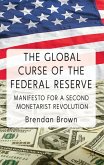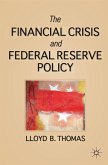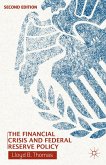The book reveals how the Global Credit Bubble and Bust of 2003-10 stemmed from giant monetary disequilibrium created by the Federal Reserve. Almost continually that institution has pursued flawed monetary practice and principle which has mutated into Bernanke-ism. The book dissects this and shows how it threatens the return of economic prosperity.
'Since its founding, the Federal Reserve's oracles have cultivated and kept alive the myth that the world's most prominent central bank is a purveyor of domestic and international stability. Brendan Brown, a première market economist, draws on his deep knowledge of economics, history and markets to expose the Fed as a great destabilizing force. Brown shines a bright light on all the nonsensical ideas and arguments that have been peddled by Fed myth makers - both past and present. He scrutinizes and explodes ideas embraced by contemporary currency warriors, including the so-called global imbalance and savings glut problems, and, yes, inflation targeting. Once Brown disrobes the oracles, he then takes monetarism to a new level and unfurls a blueprint for monetary stability.' - Steve H. Hanke, Professor of Applied Economics, The Johns Hopkins University, USA








